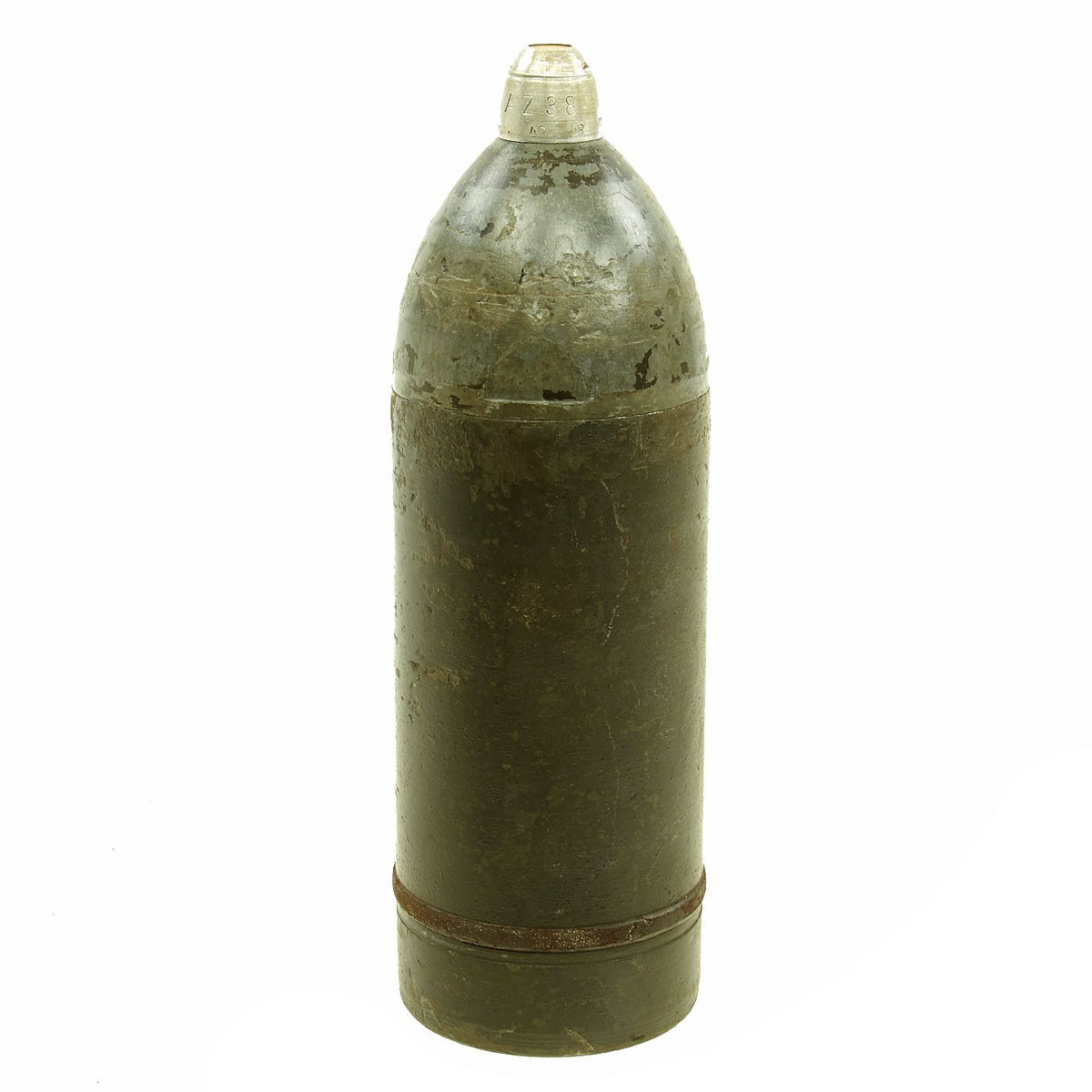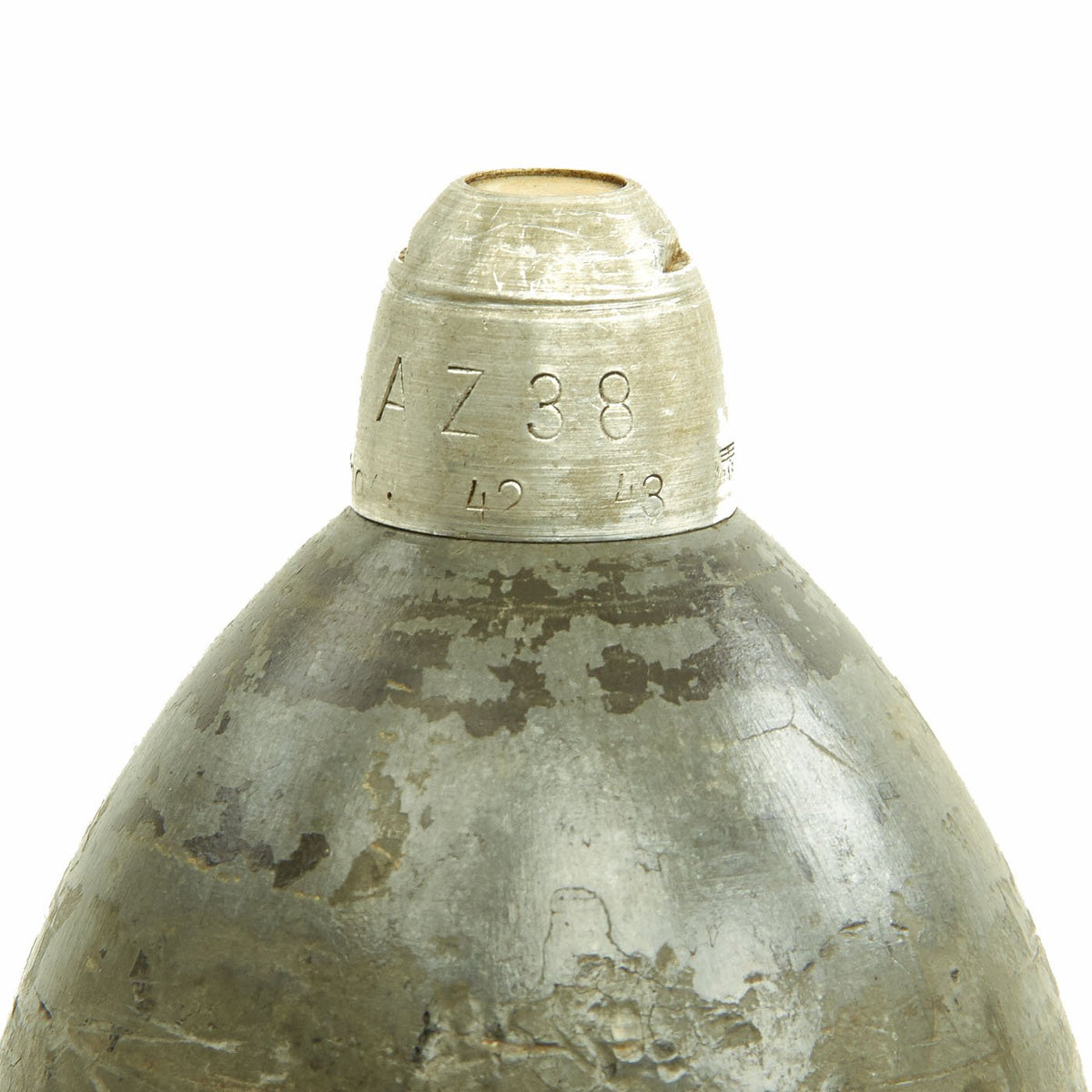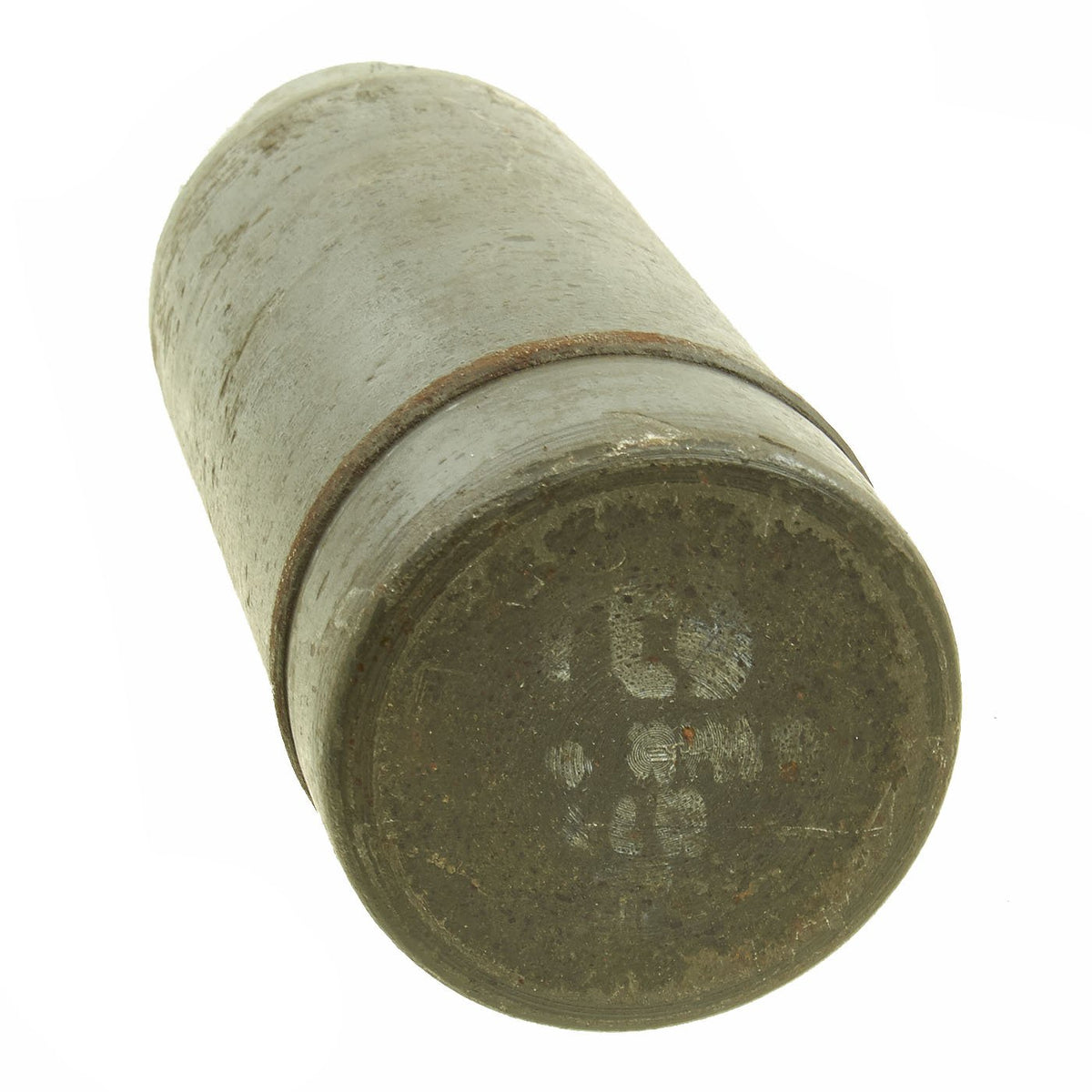Original German WWII 7.5cm le.IG 18 Light Infantry Gun Shell – 7.5 cm leichtes Infanteriegeschutz 18 Original Items
$ 350,00 $ 105,00
Original Items: Only One Available. This is a fantastic example of a 75mm cased-cartridge type projectile for the 7.5cm le.IG 18 Light Infantry Gun. It is wartime marked, in excellent condition and totally inert. The shell itself bares a serial number and faint maker code dma, for Heers Munitionsanstalt, Zeithain, a maker of artillery shells. There is also an inert AZ 38 Aluminum Percussion detonator installed on top of the shell, which bears maker code and date marking 42 43, as well as a waffenampt proof. The shell disassembles nicely for display. The shell measures 9.5″ tall and has a diameter of 9.5″.
While no longer a major component of today’s infantry units, the infantry support gun was a battlefield staple since the advent of the cast barrel. The infantry support gun proved a major player in the fighting of World War 2 and, in 1932, the expanding German Army adopted the 7.5cm leichtes Infanteriegeschutz 18 (7.5cm le.IG 18) (“Light Infantry Gun”) infantry support gun system. Design work on the type began in 1927 and manufacture was headed by the storied concern of Rheinmetall. Production spanned from 1932 into 1945, the last year of the war, with manufacture allowing for some 12,000 units to be delivered.
Weighing some 880lbs, the IG 18 was not a light artillery piece. It required a crew of five for general operation and relied on a mover vehicle for towing. It could be moved about by the crew when short distances were covered in battle – of course the terrain would play a major role. The weapon, as a complete, system, consisted of a short barrel and gun mount, a small angled shield for basic ballistics protection and a heavily-spoked solid wheel pairing. The mounting carriage was of a split trail type to which the legs opened and added recoil support when firing. The barrel measured three feet long and was 75mm in caliber.
The IG 18 fired a 75mm cased-cartridge type projectile weighing 13lbs with loading by the crew through a shotgun-style block breech mechanism. The gun mounting allowed for an elevation span of -10 to +73 degrees with traversal to either side of 12-degrees. An experiences, well-trained crew could reach a rate-of-fire of eight to twelve rounds per minute. Muzzle velocity was rated at 690 feet per second while maximum range was out to nearly 4,000 yards.
One notable variant of the IG 18 line was the 7.5cm le.GebIG 18 “mountain gun” which was the same artillery piece though designed to be broken down into six pieces for ease of travel. In this way, the weapon could be taken through the awkward mountain passes and fired from uneven ground. They proved valuable to lightly-armed forces such as German paratroopers as well.
The IG 18 series managed an active existence through all of World War 2 across countless campaigns where its short-/medium-ranged, relative light weight design and heavy hitting firepower were used alongside infantry maneuvers. The weapons could also be dug in and utilized in the defensive role.
Fast Shipping with Professional Packaging
Thanks to our longstanding association with UPS FedEx DHL, and other major international carriers, we are able to provide a range of shipping options. Our warehouse staff is expertly trained and will wrap your products according to our exact and precise specifications. Prior to shipping, your goods will be thoroughly examined and securely secured. We ship to thousands clients each day across multiple countries. This shows how we're dedicated to be the largest retailer on the internet. Warehouses and distribution centres can be located throughout Europe as well as the USA.
Note: Orders with more than one item will be assigned a processing date depending on the item.
Before shipping before shipping, we'll conduct a thorough inspection of the items you have ordered. Today, the majority of orders will be delivered within 48 hours. The delivery time will be between 3-7 days.
Returns
The stock is dynamic and we cannot completely manage it because multiple stakeholders are involved, including our factory and warehouse. So the actual stock may alter at any time. It's possible that you may not receive your order once the order has been made.
Our policy is valid for a period of 30 days. If you don't receive the product within 30 days, we are not able to issue a refund or an exchange.
You can only return an item if it is unused and in the same state as the day you received it. You must have the item in its original packaging.
Related products
Uncategorized
Band of Brothers ORIGINAL GERMAN WWII Le. F.H. 18 10.5cm ARTILLERY PIECE Original Items
Uncategorized
Uncategorized
Uncategorized
Uncategorized
Uncategorized
Armoured Fighting Vehicles of the World: AFVs of World War One (Hardcover Book) New Made Items
Uncategorized
Uncategorized
Uncategorized
Uncategorized
Uncategorized
Uncategorized
Uncategorized
Uncategorized
Uncategorized
Uncategorized
Uncategorized
Angolan Rebel 1970s era 60mm Inert Display Mortar from Angolan Civil War Original Items
Uncategorized












































































